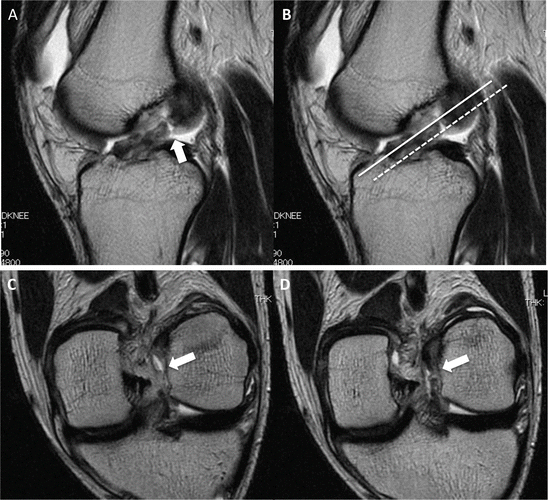

Risk factors include female anatomy, specific sports, poor conditioning, fatigue, and playing on a turf field. About 80% of ACL injuries occur without direct trauma. These movements cause the tibia to shift away from the femur rapidly, placing strain on the knee joint and potentially leading to rupture of the ACL. during a football tackle or a motor vehicle collision) A direct contact or collision to the knee (e.g.Changing direction rapidly (also known as "cutting").The pain and swelling may resolve on its own however, the knee will remain unstable and returning to sport without treatment may result in further damage to the knee. Reduced range of motion of the knee and tenderness along the joint line are also common signs of an acute ACL injury. They may also experience instability in the knee once they resume walking and other activities, as the ligament can no longer stabilize the knee joint and keep the tibia from sliding forward. When an individual has an ACL injury, they are likely to hear a "pop" in their knee followed by pain and swelling. 2.1.3 ACL, muscular stiffness, and strength.2.1.2 Hormonal and anatomic differences.While adults with a complete tear have a higher rate of knee osteoarthritis, treatment strategy does not appear to change this risk. In some sports, females have a higher risk of ACL injury, while in others, both sexes are equally affected. Ībout 200,000 people are affected per year in the United States. Surgery, if recommended, is generally not performed until the initial inflammation from the injury has resolved.

Following surgery rehabilitation involves slowly expanding the range of motion of the joint, and strengthening the muscles around the knee. This involves replacement with a tendon taken from another area of the body or from a cadaver. In those with high activity levels, surgical repair via arthroscopic anterior cruciate ligament reconstruction is often recommended. In those with low levels of future activity, nonsurgical management including bracing and physiotherapy may be sufficient. Treatment recommendations depend on desired level of activity. Prevention is by neuromuscular training and core strengthening. Physical examination will often show tenderness around the knee joint, reduced range of motion of the knee, and increased looseness of the joint. Diagnosis is typically made by physical examination and is sometimes supported by magnetic resonance imaging (MRI). It is more common in athletes, particularly those who participate in alpine skiing, football (soccer), American football, or basketball.

The underlying mechanism often involves a rapid change in direction, sudden stop, landing after a jump, or direct contact to the knee. In approximately 50% of cases, other structures of the knee such as surrounding ligaments, cartilage, or meniscus are damaged. Swelling generally appears within a couple of hours.

Symptoms include pain, a popping sound during injury, instability of the knee, and joint swelling. The most common injury is a complete tear. Neuromuscular training, core strengthening Īn anterior cruciate ligament injury occurs when the anterior cruciate ligament (ACL) is either stretched, partially torn, or completely torn. Medical condition Anterior Cruciate Ligament injuryĪ "pop" with pain, knee instability, swelling of knee


 0 kommentar(er)
0 kommentar(er)
